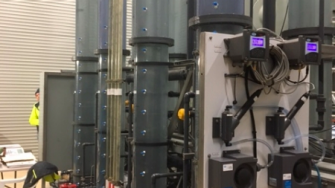Chemical Engineering | Civil and Environmental Engineering

This is a PhD project to monitor the adsorptive capacity of aged granular activated carbon (GAC) for biogenic taste and odour (T&O) compounds; explore biofilm formation on GAC that leads to biological activated carbon (BAC) and measure BAC capacity for biodegradation of T&O; and develop a model to predict when GAC/BAC reach exhaustion in terms of T&O removal.
Algae are increasingly challenging the capacity of drinking water treatment plants to meet water quality guidelines due to the release of taste and odour (T&O) metabolites. GAC/BAC are often used to remove these compounds.
However, several knowledge gaps remain relating to selection of carbon type, biofilm formation, and carbon aging. Furthermore, development of a model to predict adsorptive performance, time taken to reach carbon exhaustion, and breakthrough of T&O compounds would lead to major cost savings for the water industry.
Risk management | Treatment | Surveillance
2019-2023
- Focused Research Questions
- Key Outcomes
- Researchers
- Partners
- What is the relative importance of adsorption and biodegradation processes for T&O removal by GAC/BAC?
- How does structure and elemental composition of the carbon affect batch adsorption performance?
- Why do biofilms develop on activated carbon and what are the dominant microbial functions?
- Can we develop a predictive model of T&O removal that scales from lab to pilot plant?
Review of T&O removal efficiency by GAC/BAC in full-scale water treatment plants (Faruqi et al, 2018)
University of New South Wales | Melbourne Water | WaterRA




